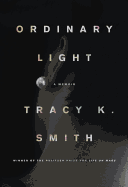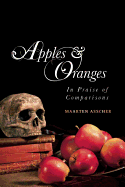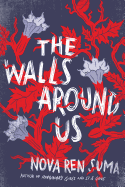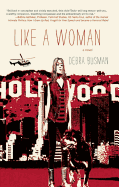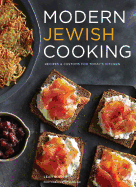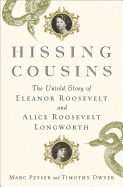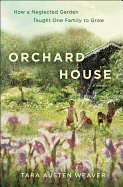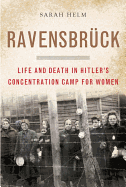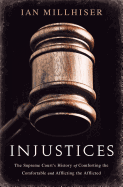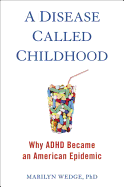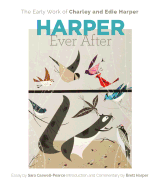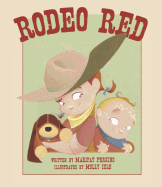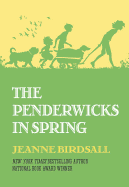Friday, April 3, 2015
As a big fan of Hilary Mantel's Booker Prize-winning novels Wolf Hall and Bring Up the Bodies, I'm eagerly anticipating this Sunday's premiere of the BBC adaptation on PBS Masterpiece.
My relationship with Thomas Cromwell has been a curiously organic one, and it all started at Manhattan's Frick Collection during the late 1990s. The first time I entered the Living Hall, I was immediately drawn to Hans Holbein's extraordinary painting of Sir Thomas More, who seemed noble, keen-eyed, brilliant. My reaction was certainly influenced by Utopia, one of my favorite books, as well as Peter Ackroyd's 1998 biography, The Life of Thomas More.
On the same wall, Holbein's portrait of Cromwell had the opposite effect. I saw him as uptight and staid, like a grouchy uncle at a family reunion. He glared across the fireplace at More with envy and scorn. Or so I believed.
Then I read Wolf Hall in 2009. The next time I visited the Frick, Cromwell had altered dramatically, his expression radiating subtlety, mischievousness and wisdom, while More seemed a bit... dyspeptic. I knew who was to blame. Mantel had completely disarmed my longstanding--and admittedly irrational--prejudice against Cromwell through her brilliant fictional portrayal. Since then, I've been a changed man and can't wait to see two of my favorite actors--Mark Rylance as Cromwell and Damian Lewis as Henry VIII--bring Mantel's world to life on Sundays at 10 p.m. from April 5 to May 10. (More is played by Anton Lesser, though he's buried in the cast list. No disrespect intended, I'm sure).
Since then, I've been a changed man and can't wait to see two of my favorite actors--Mark Rylance as Cromwell and Damian Lewis as Henry VIII--bring Mantel's world to life on Sundays at 10 p.m. from April 5 to May 10. (More is played by Anton Lesser, though he's buried in the cast list. No disrespect intended, I'm sure).
In addition, the Royal Shakespeare Company's stage adaptation, Wolf Hall Parts One & Two, is currently in previews at the Winter Garden Theatre in New York City and opens April 9. Sounds like a great excuse for a road trip, with a ceremonial pilgrimage to the Frick Collection to see my old pals again. --Robert Gray, contributing editor
Like a Woman
by Debra Busman
In her harrowingly gritty debut novel, Debra Busman sketches the life of a young girl making her way on the streets of Los Angeles. From a heartbreakingly young age, Taylor suffers abuse and neglect. She finds solace with the stray dogs roaming near her home and learns to steal in order to provide them food and treats.
As a teen, Taylor trades the terror of her family for the nightmare of prostitution; the dogs she encounters here are merciless and dangerous. But she discovers a secret Eden living in discarded junkyard cars with Jackson, another young girl on the streets and Taylor's first love.
Through a life of constant change and upheaval, Like a Woman reveals Taylor's strength and resilience, the hardness allowing her to make it day to day, the pliability to bounce back when the rug is yanked from beneath her. She also flashes evidence of the compassionate, generous, loving being at the core of her fatefully unfortunate soul. Taylor, working as a ranch hand, tries to rope a spirited horse and admits, "I think you're just like me. I think you want some company. You just don't want somebody chasing after you, all rude and all.... Only difference is, you're a better runner than me. Me, I just gotta stand my ground and fight."
Like a Woman mimics Taylor's two sides; it is lyrically beautiful in its depictions of thoughts and feelings, while being abrasively blunt with dialogue and actions. The sum of the two is a breathtaking first novel. --Jen Forbus of Jen's Book Thoughts
Discover: A teenage girl's struggle to survive on the dangerous streets of Los Angeles.
Food & Wine
Modern Jewish Cooking: Recipes and Customs for Today's Kitchen
by Leah Koenig
Modern U.S. food culture is a joyful mix of influences, and Jewish food is no exception. Leah Koenig (The Hadassah Everyday Cookbook) adores both culinary tradition and multicultural innovation, and her food incorporates new influences and ingredients with the best of Ashkenazi, Sephardi and Mizrahi cooking.
Koenig has written about food for Saveur, Modern Farmer, Tablet and the Jewish Daily Forward, and taught cooking workshops around the U.S. In Modern Jewish Cooking, her voice is enthusiastic, knowledgeable and practical. Her recipes are kosher, and most are simple enough for daily meals. Eastern European dishes have been lightened, reseasoned or entirely rethought, and she includes a variety of Middle Eastern, Central Asian and North African flavors and recipes. She puts pomegranate molasses and cayenne in the chopped liver, and cilantro and ginger in the kreplach. Her gefilte fish is seasoned with herbs and poached in court bouillon. She offers versions of hamantaschen filled with chocolate and poppy seed, and with sweet potato and Parmesan.
Koenig champions fresh local seasonal produce and devotes a chapter to vegetarian main dishes, but also expresses her love of traditional meats, rich desserts, schmaltz and whole dairy. She intersperses her recipes with personal stories, informative essays and tips on equipment, techniques and ingredients. The final chapter is a primer on the Jewish holidays, with several menus for each. Modern Jewish Cooking is an excellent first cookbook for a beginner, while offering plenty of fresh ideas to inspire the most experienced home cooks. --Sara Catterall
Discover: An innovative book of international Jewish cuisines for daily meals and holidays.
Biography & Memoir
Ordinary Light: A Memoir
by Tracy K. Smith
In Ordinary Light, Tracy Smith opens the emotion-packed narrative with the death of her mother after a long battle with cancer. Since Smith is a Pulitzer Prize-winning poet, one expects eloquence in her prose, and she adroitly delivers, as when she considers the five or six strands of hair she's just trimmed from the nape of her dead mother's neck: "Suddenly, those few strands... were consecrated, a host. For a moment, I contemplated eating them, but then they'd be gone and I'd have been left with nothing, so I placed them in a small plastic bag, the kind of bag in which spare threads or extra buttons are provided when you purchase a sweater or coat, and tucked that into the flap of my address book."
Smith travels back in time to her early childhood and teenage years, as a black girl growing up in northern California with her stay-at-home mom, her father and four older siblings. Her mother had a deep faith in God, and she worked tirelessly to instill that belief in her children. Much of the angst in Smith's story revolves around her feelings of inadequacy, moments when she felt she failed her mother and God because of some action on her part.
But the connection Smith feels with her mother, despite their differences in temperament, remains her focus. Smith's story, of a young girl intent on discovering her own identity while trying to be the person her mother wanted her to be, is a timeless one full of love, worry and the need to call a place home. --Lee E. Cart, freelance writer and book reviewer
Discover: A poet's coming-of-age as a black girl in northern California, and the strong influence her mother had in the process.
Hissing Cousins: The Untold Story of Eleanor Roosevelt and Alice Roosevelt Longworth
by Timothy Dwyer and Marc Peyser
Throughout history, many families have occupied the public eye in American politics, but none before the Roosevelts--and none since--stood on opposing sides of the party divide. Marc Peyser and Timothy Dwyer examine how this philosophical chasm affected the relationship of Eleanor Roosevelt and Alice Roosevelt Longworth, cousins and two of the 20th century's most influential women in Washington, D.C.
Alice, the oldest child of Theodore Roosevelt, and Eleanor, the oldest of Theodore's brother Elliott, grew up together, close friends as well as first cousins. Despite their friendship and family ties, the two Roosevelts possessed very different personalities. As Alice followed her father and, later, her husband into Republican politics and Eleanor shared her husband's liberal Democratic beliefs, battle lines were drawn between the two women for an ideological war that lasted decades.
Using historical documentation as well as insights from family and friends--e.g., Eleanor, rather than Alice, was often said to be more like Teddy--Peyser and Dwyer artfully piece together this epic rivalry they describe as "plucked from not one but two classic story lines: daughters competing for the patriarch's love, and the good girl versus the bad girl."
Hissing Cousins is a comprehensive, nonpartisan, often humorous narrative of a complex family with insecurities, secrets and passions. The issues that drove the Roosevelts read like a list of modern U.S. current events--foreign policy, gender rights, civil rights, national health and unemployment insurance--making their story as relevant as it is fascinating and informative. --Jen Forbus of Jen's Book Thoughts
Discover: Roosevelt cousins Eleanor and Alice and the political differences dividing one of the U.S.'s most famous families.
Orchard House: How a Neglected Garden Taught One Family to Grow
by Tara Austen Weaver
Nurturing a garden is a lovely metaphor for healing a family. In Tara Austen Weaver's memoir, Orchard House: How a Neglected Garden Taught One Family to Grow, the comparison is literal, and her experiences could serve as a handbook for both.
On a plot of northern California land, Weaver's single mom gardened to provide food for her two kids. As a student and writer, Weaver traveled the world before settling in Seattle, near her brother and his young family. The three were never close. "If there was an instruction manual for family unity, we hadn't received ours."
But when their mother moves to Seattle, and she and Weaver find a house with half an acre of neglected garden, they share a vision: raspberries and strawberries; cherry, apple, quince and persimmon trees; potatoes and tomatoes--and a place for Weaver's young nieces to play. "Together we might be able to grow something that would last."
Shared tenacity through bumper and failed crops nurtures family insights. Ill while her mother is away, Weaver gathers greens for soup. "My mother wasn't there to comfort me--she had rarely been able to give me what I needed. But here was a garden of vegetables she had worked hard to grow. Now, when I needed it most, she was nourishing me. She couldn't give me herself. Instead she had given me the tools to be strong on my own. Perhaps that was her greatest gift to me: resilience and strength, the ability to survive."
A master gardener and permaculture designer, Weaver shows Pacific Northwest gardening savvy and a wise exploration of family roots. --Cheryl Krocker McKeon, manager, Book Passage, San Francisco
Discover: A memoir of a family working together to turn neglected Seattle urban acreage into a source of fruit, vegetables and family bonding.
History
Ravensbrück: Life and Death in Hitler's Concentration Camp for Women
by Sarah Helm
In 1939, the Nazis opened Ravensbrück, a concentration camp for women. Sarah Helm (A Life in Secrets) offers a biography of the camp and its occupants in this extraordinary book. Helm begins with the moment the camp's chief woman guard, Johanna Langefeld, saw Ravensbrück for the first time to the camp's closure at the end of the war. Ravensbrück does not simply recount what happened. Helm tells the history of this part of the Holocaust with stories about those who were sent to Ravensbrück and those who ran the camp.
Johanna Langefeld seemed to be under the impression she would be "re-educating prostitutes," but by the time the camp opened, the women who arrived came from mixed backgrounds, from Germany and occupied countries, and some were Jewish. Most eventually died from starvation, disease and overwork; a smaller number died in the gas chambers. The inmates were political activists, opera singers, vagrants, a trapeze artist and women like Wanda Wojtasik, who became one of the medical "guinea pigs." The women guards came from varied circumstances.
Helm's phenomenal research material includes official documents, letters and diaries, interviews, blueprints and other primary sources. Using these narratives, she creates what reads as a firsthand account of significant events and changes in Germany that allowed such a place of horror to be built.
Helm manages to bring to light the unimaginable abuse and suffering, but in Ravensbrück she goes beyond the atrocities to chronicle the lives of the women, both the Nazi staff and the regime's victims. --Justus Joseph, bookseller at Elliott Bay Book Company
Discover: A historical biography of a women's concentration camp that chronicles the lives of the many women sent there.
Political Science
Injustices: The Supreme Court's History of Comforting the Comfortable and Afflicting the Afflicted
by Ian Millhiser
Armed with data and passion, constitutional policy analyst Ian Millhiser dissects the annals of the U.S. Supreme Court to make the argument that the unelected arm of the federal government has historically favored the interests of conservative politics and big business over the welfare of individuals. From early workers and civil rights cases to modern health care and campaign finance disputes, Millhiser's Injustices scrutinizes decisions that have shaped the American landscape.
Civics classes teach that the Supreme Court ensures the constitutional rights of all Americans, and that the justices perform their duties with a nonpartisan perspective. But evidence doesn't support this. Millhiser cites cases such as Lochner v. New York, which in 1905 struck down workers' rights in favor of employers' rights to create unrestricted contracts, and Buck v. Bell, issued in 1927, which ruled that a woman could be sterilized because she was an imbecile, and therefore should not perpetuate her bloodline. Through precedent, definition, anecdotal and other supporting evidence, Millhiser shows how such decisions are unsubstantiated, often driven by personal bias, not constitutional mandate.
Furthermore, Millhiser demonstrates that some decisions in favor of individuals, like upholding the Civil Rights Act of 1964 and the Voting Rights Act of 1965 (until the Court's 2013 reversal of a key part of the Act), have improved the nation for as long as they remain law. He also praises the Warren Court, "a brief period when the Supreme Court read the Constitution and saw some of the many ways it was intended to make American lives better."
Injustices is an eye-opening look at the Court. Accessible to readers with little legal background, this is a powerful study of the branch of American government most often left unchecked. --Jen Forbus of Jen's Book Thoughts
Discover: The U.S. Supreme Court goes under a constitutional policy analyst's microscope, and his findings are startling.
Essays & Criticism
Apples & Oranges: In Praise of Comparisons
by Maarten Asscher, transl. by Brian Doyle-DuBreuil
Dutch essayist Maarten Asscher is mercurial in his interests, just as content to write about Sigmund Freud's construction of consciousness as he is about the practices of art historians. In Apples & Oranges: In Praise of Comparisons, that range of interests serves as a compass for his writing, bringing together unlikely comparisons and drawing unforeseen conclusions about his subjects. While the book presents itself, a little disingenuously, as an argument for comparing seemingly incomparable subjects, the real aim of these essays is to shed light on some of Asscher's pet interests. That may seem like navel gazing, but in his assured voice, Apples & Oranges feels more like talking to a very opinionated friend.
While certain essays in Apples & Oranges are profound ("Not the Bars, but the Door" delves into the history of writing done in prisons, while "The Cleveringa Scale" discusses one of the most prominent lawyers for the Nazis), many are focused on why academics and artists have chosen certain methods and categories of genre to define their work. Asscher spends quite a few pages on the concept of a "novel of ideas," arguing for renewed interest in The Frigate Johanna Maria by Arthur van Schendel, a book that has been mostly lost to history. No one particular chapter rises above the rest, but that's probably for the best. The even quality of the pieces makes Apples & Oranges feel more like an ongoing conversation, where subjects change every so often. Nothing is ultimately too weighty, or too slight, for Asscher's interest, making that ongoing conversation rich in variety. --Noah Cruickshank, marketing manager, Open Books, Chicago, Ill.
Discover: A quirky series of essays on a range of subjects that informs as it amuses.
Psychology & Self-Help
A Disease Called Childhood: Why ADHD Became an American Epidemic
by Marilyn Wedge
Child psychologist Marilyn Wedge (Pills Are Not for Preschoolers) wrote this fascinating and chilling book after her Psychology Today article "Why French Kids Don't Have ADHD" received seven million hits. Wedge's book may be a bitter pill to swallow for the legions of parents who are medicating their kids in order to help them concentrate better at school or to end violent tantrums. Her point is blunt and clear: while there are situations where a diagnosis of ADHD is both valid (an injury, traumatic event or seizure disorder) and treatable with medication, there are also droves of parents medicating children who have been misdiagnosed by doctors.
Wedge's message is as controversial as it is hopeful. Her theory shifts the causes of ADHD from something chemical and biological within the child to environmental factors that are often well within the control of parents. Wedge shares case after case referred to her, young patients accompanied by beleaguered parents clutching prescriptions for various narcotics. Wedge determined that in nearly every case, not only was an external stress factor (parents' troubled marriage, financial strain, a lack of structure within the home) responsible for the purported ADHD, but that when these issues were resolved, not only did the ADHD disappear but the need for medication vanished as well.
And that's a good thing, because Wedge recounts a 2014 study finding that stimulant drugs have deeply concerning effects on the long-term function of the pro-frontal cortex in children. Until more research is done, Wedge is urging people to just say no to drugs for kids (even doctor-prescribed ones) and just say yes to this book showing another way to heal. --Natalie Papailiou, Author of blog MILF: Mother I'd Like to Friend
Discover: Chilling and important information for parents considering medicating their child for ADHD.
Art & Photography
Harper Ever After: The Early Work of Charley and Edie Harper
by Charley Harper, Edie Harper, Sara Caswell-Pearce, and Brett Harper
Harper Ever After is a collection of artwork and photographs offering a fascinating glimpse into the beginnings of a 50-year artistic love story between Charley and Edie Harper, noted visual artists from Cincinnati, Ohio.
The artwork is presented in scrapbook form and reflects the couple's formative artistic development, starting with their student days at the Art Academy of Cincinnati in the 1940s, where the two bonded instantly. The inseparable friends held differing artistic approaches, but both learned basic concepts from distinguished art instructors who served to influence the distinctive styles and sensibilities of the young couple. Charley ultimately became admired for his playful, simply rendered, realistic images of birds and wildlife, while Edie's work, in multiple mediums, tended to be more abstract, displaying wry humor and mysticism.
Many in the art community often consider the Harpers designers. Their work is popular and can be found on everything from prints to posters, needlework patterns, gift wrap and upholstery, even on puzzles and coffee mugs. Harper Ever After, however, presents a diverse trove of never-before-published drawings, paintings and graphics the Harpers created from the 1940s to the 1960s that illustrate the couple's versatility, skill and groundings in fine art. Chip Doyle, curator and archivist, offers a brief introduction. Brett Harper provides background on his parents and specific works of art. And art critic and journalist Sara Caswell-Pearce pays homage to the personal formations of these two gifted artists whose love of art--and each other--inspired and influenced every aspect of their creative and married lives. --Kathleen Gerard, blogger at Reading Between the Lines
Discover: An intimate, diverse collection of the early, formative works of American visual artists Charley and Edie Harper.
Children's & Young Adult
The Walls Around Us
by Nova Ren Suma
Nova Ren Suma (Imaginary Girls) overlays the stories of three teenage girls, told through interlocking first-person narratives, to reveal a gripping tale of multiple murders, loyalty and betrayal.
It begins on an August night, when Amber discovers that a power failure has resulted in the locks opening at the Aurora Hills Secure Juvenile Detention Center. Next, Violet describes the realization of her dream of a standing ovation for dancing the part of the Firebird. Yet she feels haunted by how her former best friend, Ori (called a "transcendent" dancer), would have performed the part, and by a memory that lurks near the Dumpsters behind the dance studio. Although readers never hear from Orianna Speerling (aka "Bloody Ballerina") directly, her story unfolds in the accounts of Vee and Amber. Suma builds suspense with Amber's sense of déjà vu: her feeling that the prison gates had opened before, and when she seees Ori's drawing of Vee in their shared jail cell, she believes she's seen Vee before.
All of the young women at Aurora Hills have complicated histories, hinted at by Amber's perceptive observations and snippets of overheard conversations--and her recollections of her own home life under a new stepfather.
The author explores the complex tapestry of truth and memory, and the idea of freedom as a state of mind versus the physical imprisonment society places upon others. Is Amber safer at Aurora Hills than she was at home? Who is freer, Vee or Ori? Just try to put this down. --Jennifer M. Brown, children's editor, Shelf Awareness
Discover: From the author of Imaginary Girls, a gripping novel of multiple murders, loyalty and betrayal.
Rodeo Red
by Maripat Perkins, illus. by Molly Idle
First-time author Maripat Perkins's charming picture book stars a redheaded cowgirl with a hound-dog sidekick who's adjusting to a new sibling.
Just as Caldecott honor artist Molly Idle (Flora and the Flamingo; Flora and the Penguin) used dance and figure skating as visual metaphors for friendship, here she makes the most of cowgirl attire and lingo to describe the plight of a big sister. Rodeo Red names her new brother Sideswiping Slim (Idle dresses them in similar attire, hinting at their kindred spirits), and describes how the baby disrupts her paradise ("Rusty and me had always been happier than two buttons on a new shirt"). Her parents transform into "the Sheriff and her Deputy," and Slim seems always to "have the law on his side." Idle shows Rodeo Red swinging open saloon-like doors, and discovering her spurs missing and grape jelly on her favorite hat. Then one day comes the last straw: Rusty, her stuffed hound, goes missing. Rodeo Red knows "Slim was up to his sideswiping ways." A series of full-page and panel sequences chronicle the big sister's rescue attempts, which result in a sentence in a "holding cell" (a spindle chair labeled "Time Out"). When Aunt Sal sends a belated birthday gift of a stuffed cat (seen on TV in an earlier illustration), an idea takes hold under Rodeo Red's ten-gallon hat.
Perkins characterizes Rodeo Red as a stand-up sister. She tries to reason with Slim and, though she resorts to some drastic measures, in the end, she makes a fair trade with her brother. --Jennifer M. Brown, children's editor, Shelf Awareness
Discover: A fresh take on adjusting to a new sibling, with cowgirl attire and lingo.
The Penderwicks in Spring
by Jeanne Birdsall
It's been four years since the most recent Penderwicks title, The Penderwicks at Point Mouette--but well worth the wait. At the outset, we catch up with all the Penderwick sisters and two new additions: Ben (age seven) and Lydia (age two). Rosalind is away at college, and Jane and Skye are in high school. This story belongs predominantly to Batty, now 10.
We learn that Batty's beloved Hound has died, and Batty blames herself. She keeps these feelings, along with many more thoughts, inside. When the school's new music teacher proclaims Batty's singing voice as rare as "finding an orchid blooming in a daisy field," Batty becomes determined to earn money for singing lessons. Ben helps her launch PWTW, Penderwick Willing to Work, and she lands a job walking two dogs: a fat one named Duchess and a cowardly one named Cilantro. Through simple descriptions and comical situations (Batty brings her wagon along in case Duchess can't make the full trip, but it frightens Cilantro), Birdsall fills even a routine dog walk with humor and warmth.
When Batty overhears Skye blaming Batty for their mother's death, Batty goes into a tailspin, and it takes perceptive neighbor Nick Geiger to discover the source of her grief. This is a Penderwick story, however, so all wrongs are righted. Birdsall once again shows her skill at weaving a modern-day story with plenty of appeal. Readers new to the series will go in search of previous Penderwick tales, and loyal fans will wait impatiently for the series conclusion in 2017. --Cathy Berner, Blue Willow Bookshop
Discover: A delightful family novel that's perfect for both readers new to the Penderwicks and loyal fans.


